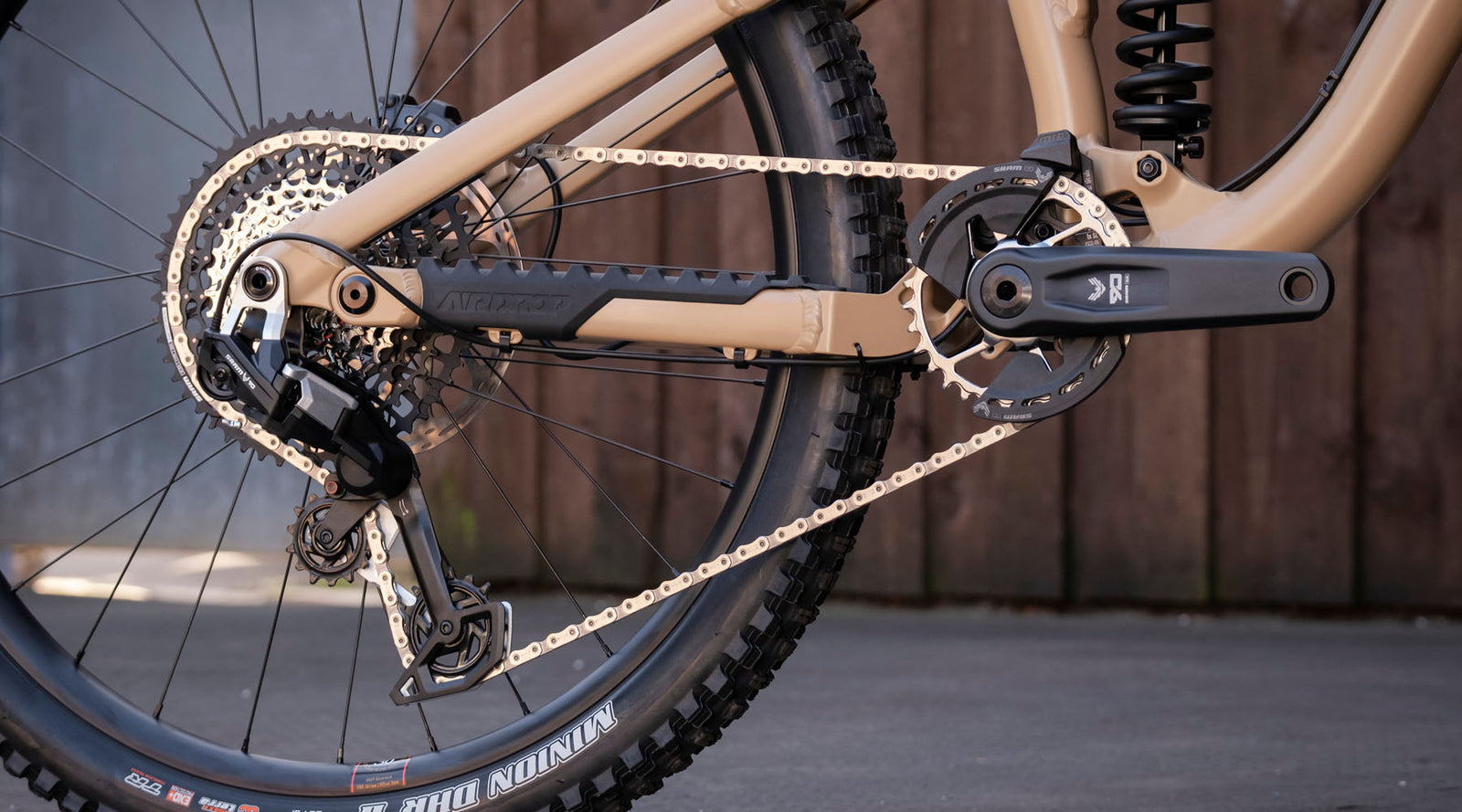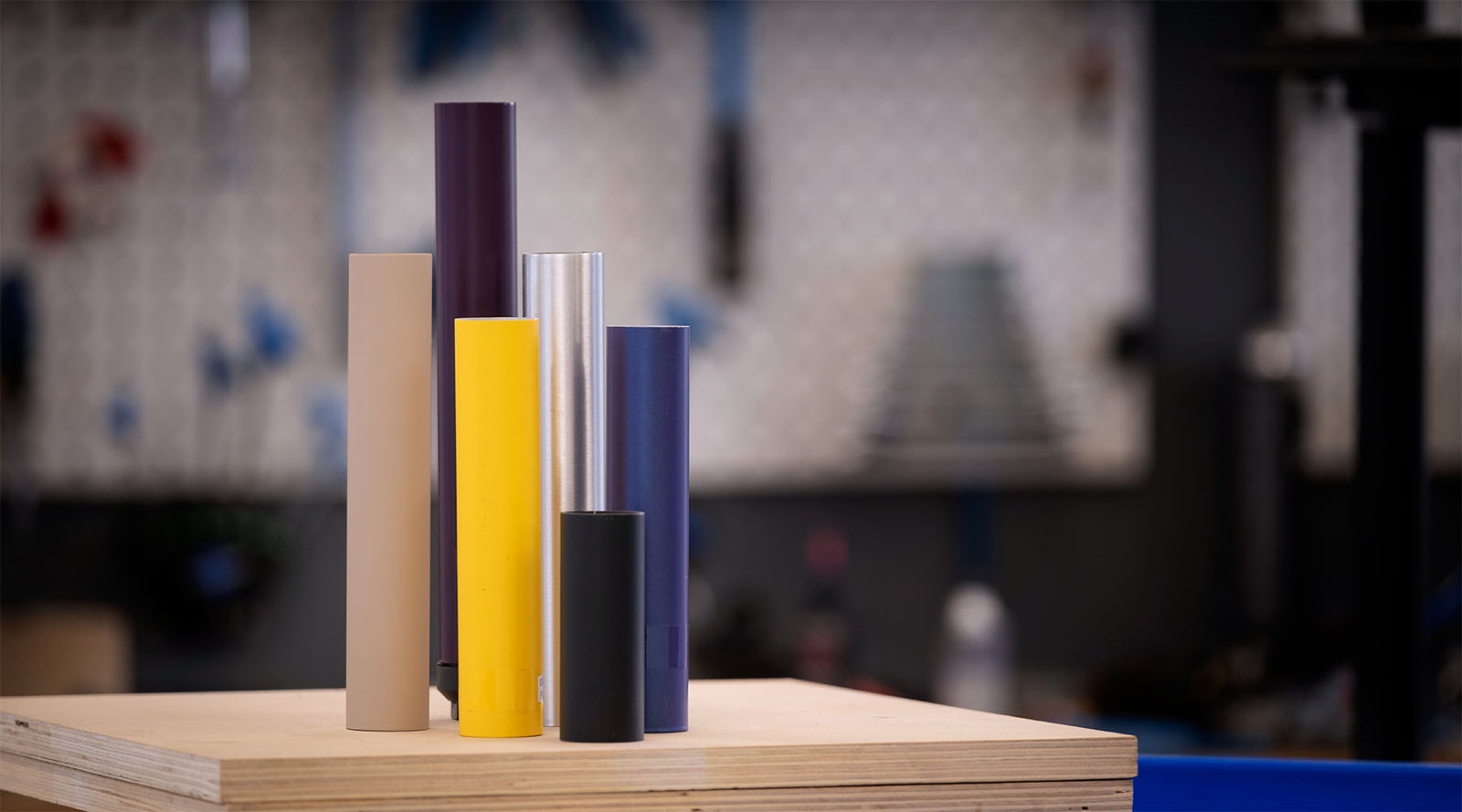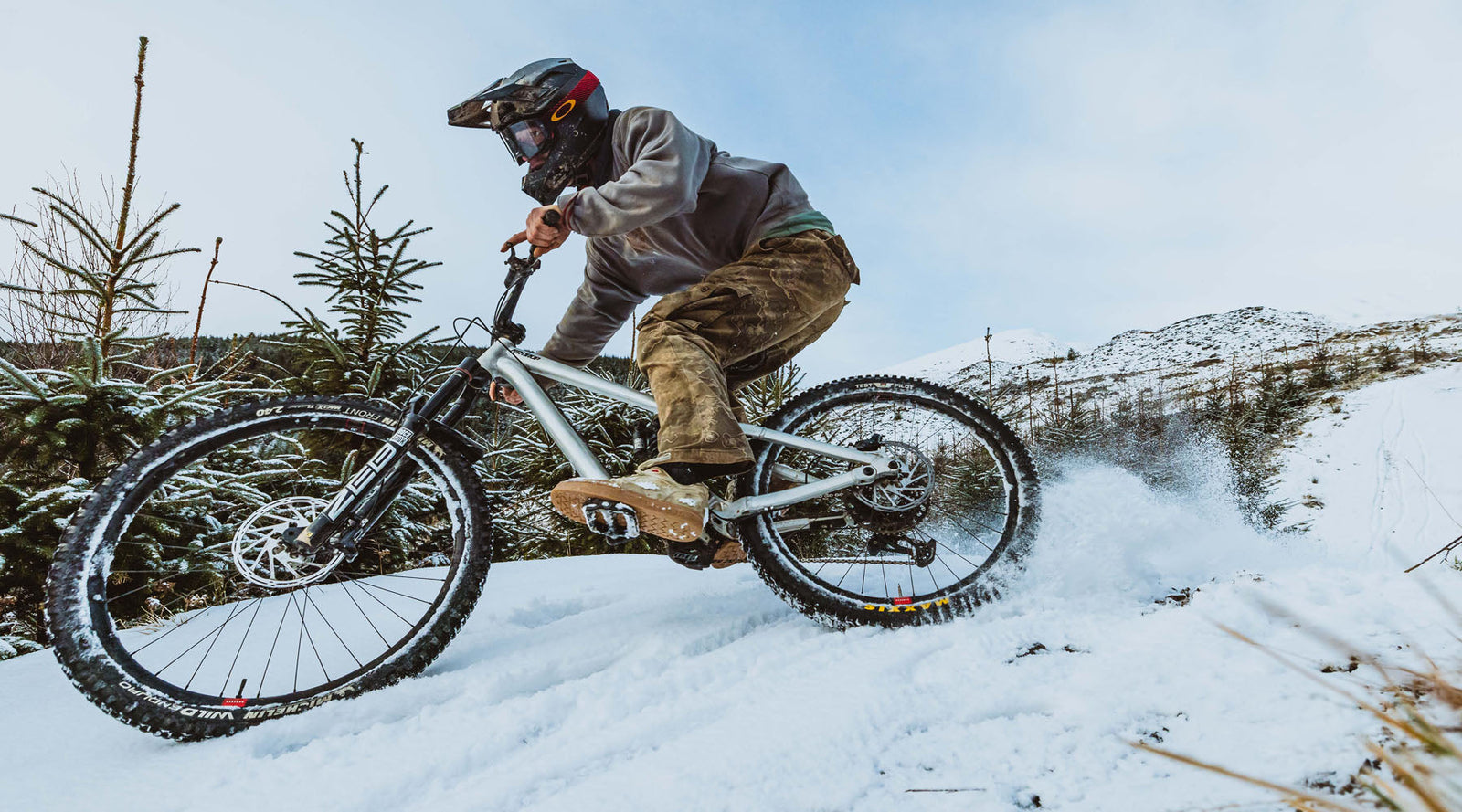
The Recovery Weeks 1-6
January 23, 2017
If you've been following the blog recently, you'll know that I suffered the latest in a series of shoulder dislocations over the Summer (see Out of Action) which resulted in me having a Bankart Repair and Slap Repair surgery in the middle of December. I got a lot of messages asking for a follow-up on how the recovery has gone, so now I'm 6 weeks in and I've got some progress to report.
Please Note that I'm not an expert in this area. Nor am I an athlete; I'm just an average rider. So the best I can do is share my own experience. But that's probably why people are asking for updates: maybe it's more relevant than the medical information or the athlete training diaries you can find online. It's this kind of real-world insight that I found hard to access before I had the surgery.
Week 1
Main Challenge: Recovering from the surgery and pain control
I think it's fair to say that I underestimated the gravity of the surgery. Not that it's a major procedure, but it was under general anaesthetic; it involved some fairly invasive techniques and as a result, the immediate aftermath was less about the shoulder and more about just getting over the surgery itself.
Initially I was told that I would be a day-case, but the care team at the hospital nipped that in the bud straight away. I came out of theatre at about 8pm and wasn't really able to hold a conversation for a couple of hours, never mind go home. So I was in overnight and by 2am I was glad of that decision. The nerve-block had worn off and the pain had kicked in. At that point I commenced the pain control medication and that set the tone for the rest of the week.
I got home the day after the surgery, and went straight to bed. It was all I was capable of. My arm was still partially numb, my shoulder swollen and of course, immobilised by the sling. I was tired, still processing the drugs from the surgery and getting used to the post-op pain relief. It was hard to think straight never mind look after myself physically, so having the support of my family was critical. Most important was my wife's ability to work out a regimen for my pain relief and keep track of what I was taking and when, which I was unable to do reliably. It took me a couple of days to work out what really worked for me; Codeine offered the best pain relief but it also made me feel worse mentally, so I took to using it mainly at night, when I needed to get some rest. In the day I used regular paracetamol and ibuprofen in combination. It kept everything manageable but also enabled me to stay reasonably sane.
Around day three I thought I was on top of things so tapered off the Codeine. Boy was that a mistake. By 10pm I was in a lot of pain again and unable to sleep at all. The doctors had told me that the key to pain relief is to stay on top of it - once you get behind it's very hard to catch up. So that night was tough and I resolved to take things a bit more slowly.
Apart from the pain control, this week was mostly about addressing practical challenges. The surgeon's advice was strictly to wear the sling at all times, and not to move the arm at all. Ordinarily some passive flexibility exercises are recommended but with my double-repair the surgeon felt that there was too much risk of rupturing something. It was a question of doing everything one handed and trying to avoid any impacts on or movement of the right arm.
It was the week before Christmas so work was naturally quiet. I had a bit of space to work out how to do the everyday things - getting dressed, showering and so on. I had two slings so I could shower in one then leave it to dry while I wore the other one. At first just taking the sling off was hard, and I developed a technique of sitting down with a rolled towel under the arm to support it while I made the switch. Even the weight of the arm was too much for the shoulder to bear so these were slow & steady tasks. I wanted to wear the sling outside my t-shirt, so getting dressed was also a bit of a challenge. Doing that without moving the elbow away from my side (no external rotation) involved some contortions and a lot of patience. That first week I spent a lot of time wearing tracky-bottoms and a t-shirt, and I bought some slide-on shoes to avoid the laces conundrum.
Week 2
Main Challenge: Lack of sleep
Christmas week. By the start of week two I felt that the pain relief wasn't helping any more. There was still a lot of pain but that was inevitable and I felt that I would rather get back to living a healthy lifestyle. In the day it was no longer a problem; the constant pain had worn off and it only hurt if I did something I shouldn't have. But the nights were tough, mostly because it was impossible to get comfortable. Essentially I had to lie on my back which made it very hard to get to sleep, and if I moved to any other position there was too much pain to sleep because the arm would tend to fall off to one side or the other under gravity.
I was starting to feel that in this respect the sling was actually a hindrance. During the day it offered much needed support, and it prevented me from screwing things up. Once or twice I had an incident where I slipped, or dropped something, and the sling prevented me from sticking my arm out which would have undoubtedly caused another dislocation. Once in particular I was trying to carry a hot baking dish in my left hand, dropped it and my reaction was to reach out. I felt my shoulder joint move and had to have a bit of a sit down while the white-hot stabbing pains went away.
At night the sling started to become a problem because it prevented me from getting any comfort. Its purpose was to prevent me from rolling over or getting into a bad position, but I felt that it was not necessary since it felt so horrible to move the arm in certain ways that I couldn't even have done that in my sleep. I did stick to doctor's orders however, and kept it on. I had resolved to play the long-game and this was only week 2.
Somehow I managed to cook Christmas dinner one-handed, although eating was a bit of a primitive affair. Still, it goes to show that you do get good at doing most things one handed if you don't have any choice. By that second week I was basically used to wearing a sling so the day-to-day was not so bad. The swelling had subsided, I had my stitches removed at the end of the second week and the surgical scars were healing up nicely. The surgeon had said "we had to drill a few more holes than we wanted" but I only have two clusters of 3-4 scars where the small incisions were made.
Week 3
Main Challenge: Helping my wife to give birth
The first couple of weeks had been about me; I had my wife's support and I had needed it. But Muniza was due to give birth on New Year's Eve and the plan all along had been to get me to the point where she could be the priority. After all, a minor shoulder surgery is nothing compared to childbirth and actually, having that perspective was helpful. My own situation was merely inconvenient but having a child can be life-changing. So by the end of December I was off any kind of pain relief, I had the day-to-day tasks dialled and I had been able to catch up on work - without being able to ride or build bikes I took the time out to do some development work on future bikes, which was great. By the time Jules Holland kicked in I had a double-strong amaretto sour in hand, and decided to treat myself to a night without the sling.
Naturally that's when the baby decided to arrive, so New Year's Eve turned into a 40-hour long day for both of us. The good news is we had a healthy baby boy born at home and everything went really well. Now this probably isn't relevant to anyone else, but just in case it does come up, you can assist in childbirth with your arm in a sling. Provided your wife is awesome.
I had my first physio appointment in week 3 but there's very little to report. She had been advised by the surgeon that no movement was permitted so we just said our hellos and that was about it. One useful piece of advice though was that I had been unable to judge if I was damaging the repair. Inevitably you bump into things, jar your arm or make some involuntary movements. And it would hurt. But with no frame of reference I couldn't tell if I had ruined everything. The physio assured me that a bit of pain was normal, and I'd know if I had destroyed the repair, because my arm would be dislocated again. Some how that was reassuring.
Week 4
Main Challenge: Frustration
At this point I'd been in a sling for a month and it was getting a bit samey. The novelty had worn off. Plus we had a new baby in the house and me being impaired wasn't helping me to look after everyone properly. I still needed the sling for sure, but the main difficulty was dealing with the frustration because I wasn't yet allowed to begin an active recovery.
My resolve to follow doctor's orders was also being eroded. I do tend to make up my own mind about things and I felt that the risk of the arm and hand stiffening up outweighed the risk of me making a mistake. So if I was ever sitting down for a period of time, somewhere safe, I took the arm out of the sling and rested it on a pillow. Just that small act of rebellion made things a lot more comfortable and I understood that at least some of the discomfort was from the lack of usage and not a direct result of the surgery. Moving the hand and elbow helped to loosen up the whole arm and it was a small step back to normality.
However, the extent of the muscle loss from that month of disuse was obvious; my arm had wasted away completely. I couldn't test it physically but it was clear that it would take an awful lot of rehab and training to get the strength back to where it had been. I suppose I could have been disheartened by that but by this time I felt that the worse was over, it was a new year, my shoulder had been fixed and I was seriously looking forward to becoming active again.
At the end of the week my physio confirmed that I could remove the sling and that felt good I can tell you. The decision to remove the sling comes at the point when the risk of re-dislocating the shoulder has reduced sufficiently, so this meant I could do certain things unrelated to the arm which had nevertheless been forbidden. So for the first time I was able to get back on a turbo trainer and start to turn some pedals. A poor substitute for riding a bike if you ask me, but much better than loafing around all day.
Week 5
Main Challenge: Living without the sling
Having worn that thing for a month I couldn't wait to get rid of it. But as soon as I did, suddenly I felt vulnerable. My whole arm still felt incredibly stiff and weak, I couldn't afford to move it much and it was still important to avoid bumping into things or falling over. It was able to bear its own weight but that was it. Where the sling had been a clear sign that my arm was dodgy, now it looked normal. So I was constantly having to remind my daughter not to jump on me and I also had to remind myself that the arm was for display purposes only.
Getting dressed and having a shower was great. No more wet-sling operations to perform, and the physio was pragmatic about my range of movement. She felt that the official advice from the surgeon was a little to stringent and with the benefit of her judgement, I started to get back to small movements in the arm. Week 5 was the point at which the benefits of using the arm outweighed the risks, and finally I could get onto an active form of recovery. I was on the turbo trainer regularly and working on core strength which had evaporated, and the mental benefits of becoming active again were huge. I may not have made many gains physically but I started to feel like myself again.
It was also increasingly important for me to get back to Airdrop. Although I hadn't actually switched the business off, I had been taking things easy and you guys had been very understanding. I think a lot of customers had been aware of the situation and gave me the space I needed over Christmas. But it was now mid January and with minds turning to the new year, the Summer ahead and all the awesome bikey stuff 2017 has in store, the business came roaring back. I finally, and not before time, got some help in. I now have a part-time bike builder putting things together and although I was forced into that, it's been a welcome change.
Week 6
Main Challenge: Pacing the recovery
This brings us more-or-less up to date. I've had at least a week of active recovery, with a range of exercises provided by my physio. They're only focussed on range of movement and not strength at this stage, but I can clearly see progress. As a result I'm really positive about the recovery and I feel like I probably "bottomed out" a couple of weeks ago.
As things stand right now I have something like 80% range of movement in the shoulder, and by my own estimation around 10% strength. The maximum I'm allowed to pick up is a cup of tea, so I can't do any physical work as such, but things like sitting at a desk and typing are fine, and I can drive for the first time since the operation. I have exercises to do every hour or so, and I'm trying to stick to the regime but it is difficult, even though it's important. I'm back to working full days now so it's important for me to remember I'm only part way through a recovery process and I mustn't get lazy about it.
If my flexibility improves enough, this week's physio should involve some exercises to start to regain strength. Strength training is something that has always been important to me so I'll be very glad to get back to it, but I'm also aware that I'll need to pace myself and try to avoid any muscle injuries that might set the overall recovery back. It's all about keeping my eyes on the prize and that's getting the all-clear to ride a bike again. It'll be at least another 6 weeks before I'm allowed to do that, but when I do get the green light, I want to be in good enough shape to enjoy it. And of course I've got some really excited Airdrop stuff in the pipeline so I'm probably looking forward to this summer even more than normal.
I just want to say thanks to everyone for the interest and the support, and for being so understanding. I was worried about how Airdrop would survive the last month but with your help, it has gone really well. Cheers!
Ed Brazier
Ed is the owner of Airdrop Bikes. A former web and graphic designer, he sacked off his job one day and decided to start up a bike brand.
7 Responses
Tracey Taylor
March 14, 2019
Hi I’m in my 6th week of having a right shoulder Bankart repair I’m on physio instructions now to try and get it moving, but the pain is unbearable and not sure if it’s just the muscle as the pain comes mostly from there, how did you get your arm moving through that pain, I’m still not allowed to drive due to limited movement pls can you advise me as I don’t see my surgeon until the 28th to see if he will sign me off
Maclaren Edwards
July 31, 2018
Hello Ed,
Hope your well,
My name is Maclaren, Im from London.
I recently had my Bankart Right Shoulder repair, I am very concerned about the long term affects about the surgery and so i write to you,
What is your status now? are you able to do full range movements by now? like external rotations? or trying to internally rotate the operated arm and touch your back? What are the things you are not able to do with the operated arm which you able to do pre-op?
Kind Regards,
Maclaren
Jon Bradburn
March 21, 2018
Hi Ed, really enjoyed reading your blog!
After a number of sporting injuries in my teenage years dislocations to both right and left shoulders, I too suffererd continued dislocations to my right shoulder. In May 2017 I suffered a dislocation which was so severe I was advised that I would now need Shoulder surgery. Due to a heavy work schedule I put off the operation until February 2018 and underwent right shoulder arthroscopy bankart stabilisation. I am now in Week 6 completing 3-4 times daily passive exercises and awaiting surgeons review in two weeks. I am currently unable to drive, on average my journeys are 150 miles each day until Sign Off from my consultant surgeon. Slow and frustrating progress but on the road to recovery!
Lauren Williams
February 22, 2018
If you check this I would love to connect with someone whose had this surgery. How are you now? Everything go smoothly. I have huge concerns about my Dr and I’m at 6weeks Post. Thanks for your time!!
Carl Resch
February 11, 2018
Hi Ed. Really enjoyed reading your article about your recovery from your operation. I too have had the same operation, after a previous unsuccessful keyhole surgery op and was keen to get the opinions of someone else who has gone through the same. Are you currently in week 6 of your rehab? I’m almost 5 months into mine and not yet resumed playing football and continue to do my exercises 1-2 a day. Am interested to find out how the rest of your rehab goes. Carl
Simon Howett
January 23, 2017
Congratulations on your new arrival, you had a full on few months by the sound of it.
Step by step Ed , roll on summer & your recovery.
If ya don’t already try Pilates it helped me no end with flexibility after a few shoulder injurys .
Leave a comment
Comments will be approved before showing up.
Also in Airdrop Bikes Blog

90 Series Transmission
March 27, 2025
SRAM just launched the new 90 Series Transmission. All the advantages of T-Type full mount drivetrain with the reliability of mechanical shifting? Sounds good. It's already available on the Edit MX...

New Frame Colours
February 18, 2025
With new batches of Edits and Slackers coming in (Fades just arrived), we've taken the opportunity to freshen things up with new colours.
Read More

Introducing Alf Raynor
February 12, 2025
We're stoked to announce that Alf Raynor is riding for Airdrop Bikes. Alf is likely the hardest man in MTB, he loves the Graft and goes hard on the build. His Raw style on the bike and commitment is something that has to be seen to believed; it's wild.
Email Newsletter
Our monthly email newsletter gets you access to all the good stuff before everyone else.
Get The Inside Line
We're always working on stuff behind the scenes and we'd like to share those stories with you. One email a month, and we make it worth a read.
Sign up to get the inside line.

dc
October 12, 2021
How is your shoulder? Do you have range of motion/strength back to normal now? Any more dislocations since?